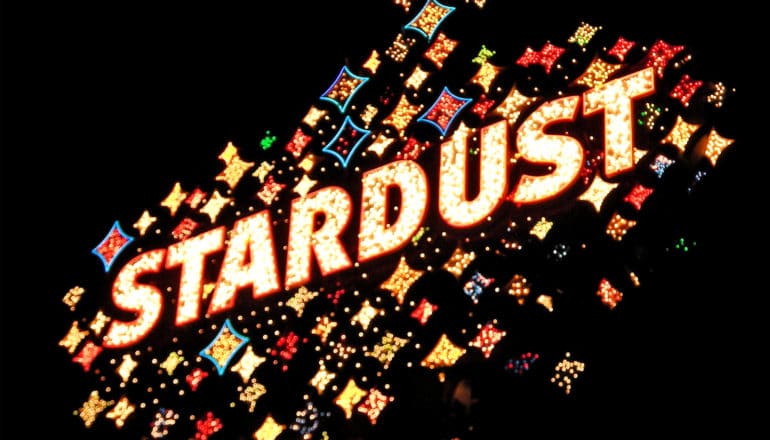
The Earth is partly made from stardust from red giant stars, researchers report.
They can also explain why the Earth contains more of this stardust than the asteroids or the planet Mars, which are farther from the sun.
Around 4.5 billion years ago, an interstellar molecular cloud collapsed. At its center, the sun formed; around that, a disc of gas and dust appeared, out of which the Earth and the other planets would form.
This thoroughly mixed interstellar material included exotic grains of dust. “Stardust that had formed around other suns,” explains Maria Schönbächler, a professor at the Institute of Geochemistry and Petrology at ETH Zurich. These dust grains only made up a small percentage of the entire dust mass and were distributed unevenly throughout the disc.
“The stardust was like salt and pepper,” Schönbächler says. As the planets formed, each one ended up with its own mix.
Thanks to extremely precise measurement techniques, researchers can detect the stardust that was present at the birth of our solar system. They examine specific chemical elements and measure the abundance of different isotopes—the different atomic flavors of a given element, which all share the same number of protons in their nuclei but vary in the number of neutrons.
Stardust’s fingerprint
“The variable proportions of these isotopes act like a fingerprint,” Schönbächler says. “Stardust has really extreme, unique fingerprints—and because it was spread unevenly through the protoplanetary disc—each planet and each asteroid got its own fingerprint when it was formed.”
Over the past 10 years, researchers studying rocks from the Earth and meteorites have been able to demonstrate these so-called isotopic anomalies for more and more elements. Schönbächler and her group have been looking at meteorites that were originally part of asteroid cores that were destroyed a long time ago, with a focus on the element palladium.
Other teams had already investigated neighboring elements in the periodic table, such as molybdenum and ruthenium, so Schönbächler’s team could predict what their palladium results would show. But their laboratory measurements did not confirm the predictions.
“The meteorites contained far smaller palladium anomalies than expected,” says Mattias Ek, a postdoctoral researcher at the University of Bristol who made the isotope measurements during his doctoral research at ETH.
Red giants and the Earth
Now the researchers have come up with a new model to explain these results. They argue that stardust consisted mainly of material produced in red giant stars. These are aging stars that expand because they have exhausted the fuel in their core. Our sun, too, will become a red giant four or five billion years from now.
In these stars, what’s known at the slow neutron capture process produced heavy elements such as molybdenum and palladium. “Palladium is slightly more volatile than the other elements measured. As a result, less of it condensed into dust around these stars, and therefore there is less palladium from stardust in the meteorites we studied” Ek says.
The researchers also have a plausible explanation for another stardust puzzle: the higher abundance of material from red giants on Earth compared to Mars or Vesta or other asteroids further out in the solar system. This outer region saw an accumulation of material from supernova explosions.
“When the planets formed, temperatures closer to the Sun were very high,” Schönbächler explains. This caused unstable grains of dust, for instance those with an icy crust, to evaporate.
The interstellar material contained more of the kind of dust that was destroyed close to the sun, whereas stardust from red giants was less prone to destruction and so it is more concentrated closer to the Sun. It is conceivable that dust originating in supernova explosions also evaporates more easily, since it’s somewhat smaller.
“This allows us to explain why the Earth has the largest enrichment of stardust from red giant stars compared to other bodies in the solar system” Schönbächler says.
The research appears in the journal Nature Astronomy.
Source: ETH Zurich
The post Our planet is partly made of stardust from red giants appeared first on Futurity.
from Futurity https://ift.tt/38tMddm
No comments:
Post a Comment